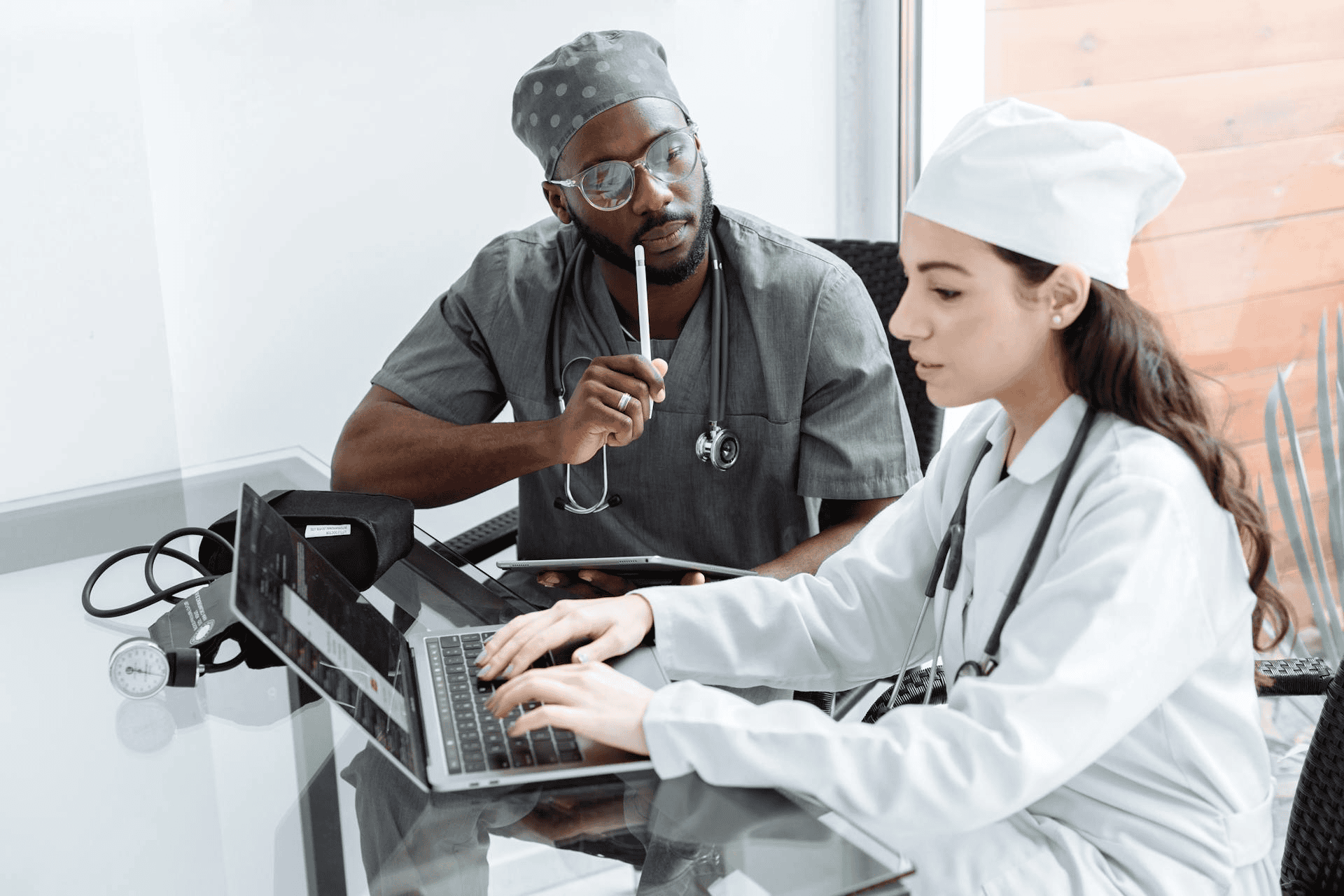AI Will Create the New Digital Workforce in Health

In the rolling hills of southern Ohio, Adena Health System is quietly undertaking a transformation that could reshape how health systems across the country think about Generative AI. Rather than treating AI as a buzzword or bolting it onto existing operations, Adena’s leadership is strategically designing a digital workforce—one that enhances care, improves clinician well-being, and reimagines how patients engage with healthcare. At the center of this change are Jamie Smith, Chief Information Officer, and Heather Sprague, Chief Human Resources Officer: I interviewed them about how they are steering AI implementation with clarity, purpose, and a deep respect for the human side of health.
A Strategic Start With Tangible Goals
Adena is no stranger to technological progress. As Smith described it, the system prides itself on being “cutting edge, but not bleeding edge”—eager adopters, but grounded in strategy. Their current push into AI reflects this ethos. Recognizing the uncontrolled proliferation of tools labeled “AI” across the industry, Smith and Sprague are pursuing targeted investments with well-defined objectives. Rather than simply reacting to vendor hype, they’ve set three core use cases for AI over the next 12 to 18 months: predictive analytics, clinician efficiency, and consumer-grade patient interactions.
The predictive analytics effort aims to move beyond retrospective data analysis. “We want to stop reacting to things weeks after they happen,” Smith emphasized. By training models on three years of historical patient data combined with current socioeconomic trends, Adena plans to forecast patient volumes, staffing needs, and financial projections with greater precision. This marks a fundamental shift from hindsight-driven planning to proactive, evidence-based decision-making.
Building Tools That Work for Clinicians
But it’s not just the back office where AI is being deployed. Adena’s most immediate AI pilot focuses on easing clinician burden—a leading contributor to burnout across the healthcare sector. Partnering with Microsoft’s DAX Copilot and Epic Systems, Adena is testing a language learning model that enables ambient listening and auto-documentation. Physicians speak naturally during patient visits while the AI captures and structures the conversation into medical notes, which the clinician then reviews for accuracy.
This seemingly simple change could have an outsized impact. “The first thing I want is to get the clinician away from the keyboard,” said Smith. “Let’s bring back face-to-face care.” By reducing documentation time, physicians could gain back nearly an hour each day—hours they can reinvest in patient care or personal time. Adena is tracking clicks, time in the record, and chart closure rates with Epic’s Signal analytics to ensure the pilot delivers measurable gains.
To prepare the ground, Smith’s team conducted a cross-functional needs assessment and benchmarked best practices from partners like the Ohio State University and national vendors. Physicians were involved from the outset. “Their feedback drove this entire initiative,” he noted. Weekly user groups and monthly committees surfaced key pain points and ultimately guided the selection of AI tools. This user-led approach is essential for buy-in, especially in regions like Appalachia, where there’s still cultural resistance to new technologies.
Navigating Resistance and Generational Gaps
Resistance is not just anticipated—it’s already showing up. While newer physicians fresh out of residency are often eager for innovation, some seasoned clinicians remain skeptical, preferring legacy tools or even dictation phones. As Sprague pointed out, “We’re trying to create solutions that work for all generations in our workforce.” It’s a delicate balance, and the challenge is not just technical, but deeply human.
Smith acknowledged the broader implications with refreshing candor. “If we do this right, we should be able to designate fewer people to manual functions and allow them to focus on a better overall patient care experience,” he said. “That’s a tough message because there is so much uncertainty in this healthcare arena.” While there’s no intent to cut jobs, the shift toward automation inevitably reshapes roles. Sprague emphasized retraining and reskilling as key strategies. “It’s about working at the top of your license—shifting responsibilities to the most appropriate role,” she said. This could mean moving certain tasks from physicians to nurses, or from nurses to medical assistants, while simultaneously expanding roles in IT and data governance.
From Patient Experience to Human Experience
One of the more striking shifts in Adena’s language is the move from “patient experience” to “human experience.” Sprague notes this change is intentional, blending the perspectives of patients, employees, and physicians into a unified focus on people, technology and processes. The human experience should have a direct impact on our employee’s well-being. This reframing goes beyond bedside manner or online portals—it’s about designing a healthcare environment that respects the time, intelligence, and needs of everyone involved.
Smith envisions a near future in which AI serves not as a replacement, but as an augmentation of care. He speaks of a “Nirvana” state: doctors finishing work on time and reclaiming their evenings, patients getting faster service and deeper insights into their health, and AI tools serving as reliable, invisible teammates.
That vision includes wearables and connected health devices generating real-time analytics, accessible through user-friendly AI interfaces. The goal isn’t shiny tech for its own sake, but “a digital workforce that enhances the caregiver team,” Smith said.
A Roadmap Rooted in Well-Being
The path ahead for Adena is complex. The AI governance council they’re forming will help ensure consistency, compliance, and safety. Risks—from biased data to over-reliance on automation—are real. But so are the opportunities to improve care, reduce clinician burnout, and build a health system fit for the future.
What sets Adena apart is their refusal to separate technology from the human side of healthcare. “Technology needs to be grounded in the benefit it brings to your local population and community,” said Smith. In a world racing toward AI-driven solutions, Adena’s thoughtful, inclusive, and transparent approach may be exactly what healthcare needs.
As more systems begin to integrate AI across the continuum of care, the model being built in southern Ohio is worth watching. It’s not about chasing the next trend—it’s about shaping the future of health with purpose.
Key Take-Away
Adena Health is pioneering a people-first AI strategy, enhancing care and clinician well-being by thoughtfully integrating technology into healthcare with clear goals and human-centered design. Share on XImage credit: Thirdman/pexels
Dr. Gleb Tsipursky was lauded as “Office Whisperer” and “Hybrid Expert” by The New York Times for helping leaders use hybrid work to improve retention and productivity while cutting costs. He serves as the CEO of the boutique future-of-work consultancy Disaster Avoidance Experts. Dr. Gleb wrote the first book on returning to the office and leading hybrid teams after the pandemic, his best-seller Returning to the Office and Leading Hybrid and Remote Teams: A Manual on Benchmarking to Best Practices for Competitive Advantage (Intentional Insights, 2021). He authored seven books in total, and is best know for his global bestseller, Never Go With Your Gut: How Pioneering Leaders Make the Best Decisions and Avoid Business Disasters (Career Press, 2019). His cutting-edge thought leadership was featured in over 650 articles and 550 interviews in Harvard Business Review, Forbes, Inc. Magazine, USA Today, CBS News, Fox News, Time, Business Insider, Fortune, and elsewhere. His writing was translated into Chinese, Korean, German, Russian, Polish, Spanish, French, and other languages. His expertise comes from over 20 years of consulting, coaching, and speaking and training for Fortune 500 companies from Aflac to Xerox. It also comes from over 15 years in academia as a behavioral scientist, with 8 years as a lecturer at UNC-Chapel Hill and 7 years as a professor at Ohio State. A proud Ukrainian American, Dr. Gleb lives in Columbus, Ohio. In his free time, he makes sure to spend abundant quality time with his wife to avoid his personal life turning into a disaster. Contact him at Gleb[at]DisasterAvoidanceExperts[dot]com, follow him on LinkedIn @dr-gleb-tsipursky, Twitter @gleb_tsipursky, Instagram @dr_gleb_tsipursky, Facebook @DrGlebTsipursky, Medium @dr_gleb_tsipursky, YouTube, and RSS, and get a free copy of the Assessment on Dangerous Judgment Errors in the Workplace by signing up for the free Wise Decision Maker Course at https://disasteravoidanceexperts.com/newsletter/.

